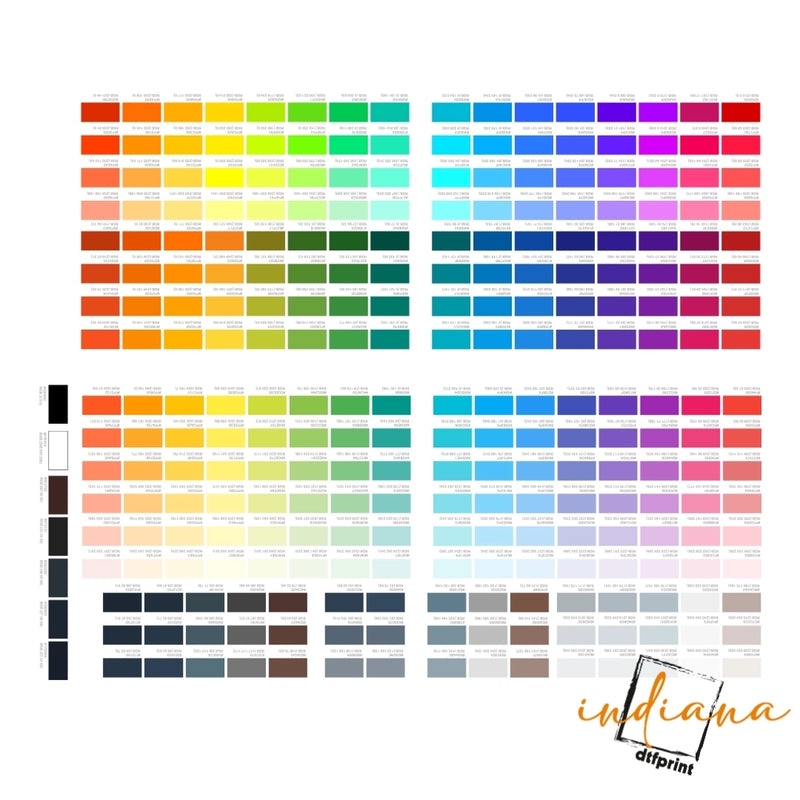Starting out with DTF (Direct-to-Film) transfers is exciting—it opens up a world of possibilities for custom apparel, whether you’re running a print shop, building your own brand, or simply exploring a side hustle. But like with anything new, there’s a learning curve. And trust me, after over a decade in the printing industry, I’ve seen a lot of avoidable mistakes that waste time, money, and good t-shirts.
Let’s walk through some of the most common DTF mistakes—and more importantly, how to avoid them so you can get clean, durable, professional results from the start.
1. Low-Quality Artwork = Low-Quality Print
Here’s the truth: your print is only as good as your artwork. If the file you’re working with is blurry or pixelated, the result on your shirt will be even worse.
What to do instead:
Always start with high-resolution images—ideally 300 DPI. Vector files (like AI or SVG) are best for logos or illustrations, but high-quality PNGs with a transparent background work great too.
Quick tip: Never use screenshots or images pulled from the web. They’re usually too low-res for printing.
2. Uploading the Wrong File Type or Background
This one’s a killer. You might not notice a white background when looking at your design on your screen—but once it’s printed and transferred, that white box will show up loud and clear.
Avoid it by:
- Uploading files with transparent backgrounds (PNG format)
- Using design software to remove backgrounds before submitting the file
- Double-checking your artwork before placing your order
3. Not Setting Your Heat Press Correctly
DTF is simpler than screen printing or sublimation, but heat press settings still matter. Incorrect temperature or time can cause the transfer to peel, not adhere, or feel too stiff.
The sweet spot is usually:
- Temperature: 150°C to 160°C (300°F to 320°F)
- Time: Around 10–15 seconds
- Pressure: Medium and even
Every press is different, so run a few test presses until you find the right combo.
4. Skipping the Pre-Press Step
It’s tempting to slap the film on and hit “press,” especially when you're in a rush. But if the fabric has wrinkles or moisture, the transfer won’t adhere properly.
Instead:
Take 5 seconds to pre-press the garment. This flattens the surface and removes any hidden moisture—especially important for cotton garments.
5. Not Peeling at the Right Time
DTF transfers are either hot peel or cold peel, depending on how they’re made. Get this part wrong and the design may lift, smudge, or not stick fully.
Fix it by:
- Knowing your transfer type (hot or cold peel—your supplier will usually tell you)
- Letting cold peel transfers cool completely before peeling
- Peeling slowly and evenly to avoid damage
Don’t rush this. Even experienced printers make this mistake when they’re moving too fast.
6. Skipping the Test Print
I’ve seen brands go all-in with 50+ shirts, only to realize the design doesn’t print right on certain fabrics or colors.
What to do instead:
Always run a test print before committing to bulk. Even just one shirt can save you a costly mistake—and a lot of customer complaints.
7. Poor Fabric Choices
DTF is super flexible, but some materials still cause issues—like stretchy spandex or heat-sensitive synthetics.
Pro move:
Stick with tried-and-true materials like cotton, poly blends, fleece, and canvas. If you’re trying something new, test it first.
8. Uneven Pressure or Poor Alignment
Uneven pressure can lead to half-stuck designs. And a crooked logo? That’s an easy way to make your brand look amateur.
Avoid it by:
- Making sure your press is level and applying even pressure
- Using alignment tools or marks to keep everything straight
- Double-checking before you press—one second can save a shirt
9. Storing Transfers the Wrong Way
Transfers aren’t indestructible. If you leave them curled, folded, or exposed to heat and humidity, they can degrade.
Here’s what to do:
- Store them flat in a cool, dry space
- Keep them in folders or plastic sleeves
- Avoid stacking heavy objects on top
Well-stored transfers can last months, even a year, without any issues.
10. Not Following Instructions from Your Supplier
Finally, every supplier is a little different. They use different inks, films, and powders—and what works for one might not work for another.
Always read the instructions that come with your order. And don’t be afraid to reach out with questions—most DTF suppliers are more than happy to help you get it right.
Final Thoughts: Avoiding Mistakes & Printing Like a Pro
DTF printing isn’t just about pressing transfers—it’s about mastering the process, so your products stand out for the right reasons. By avoiding these common mistakes, you’ll save money, cut down on waste, and deliver higher-quality results to your customers.
Whether you’re printing at home or managing a growing apparel business, DTF gives you the flexibility to work smarter, not harder. And when you get it right? The results speak for themselves—vibrant prints, soft feel, and long-lasting wear.
Need high-quality DTF transfers?
Order from IndianaDTFPrint.com and get access to:
- Rich colors and sharp detail
- Custom gang sheets and bulk orders
- Fast delivery anywhere in USA
- Friendly support to help you succeed











